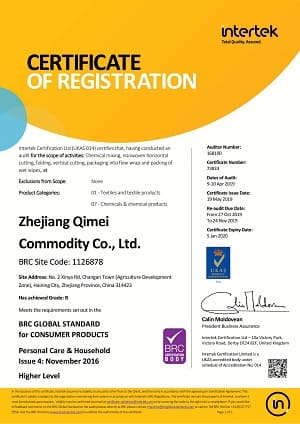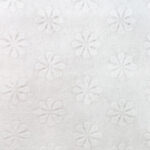Spunlace onwoven Fabric Type: Polyester,Poly -Viscose Blend material, Bamboo Fiber, Wood Pulp(Flushable), Cotton or Soy Fiber(Biodegradable)
Flat or Textured( Your Own LOGO is available)
Grammage: 30-80gsm
1/10/30/80/100/120/160 pcs/pack
The most common size of Deodorant wipes is around 6 x 6 inches (15 x 15 cm) to larger wipes that are around 9 x 12 inches (23 x 30 cm) or more. This size is convenient for single-use and provides enough surface area to clean and freshen the external genital area. However, some intimate wipes may be smaller or larger than this standard size to cater to specific preferences or needs of consumers.
1. Plastic resealable bag: This is the most common type of wet wipe packaging. It is made of plastic and has a resealable strip on top to keep the wipes fresh and moist.
2. Flip-top lid container: This type of packaging consists of a plastic container with a flip-top lid that can be opened and closed to access the wipes.
3. Soft pack with plastic flip-top lid: Similar to the flip-top lid container, this packaging comes in a soft pack and has a plastic flip-top lid for easy access.
4. Pop-up dispenser: This type of packaging features a pop-up dispensing mechanism that pulls out one wipe at a time.
5. Travel pack: A small packaging designed for on-the-go use, it often comes with a plastic snap closure.
6. Single-use packaging: These wet wipes come in small, sealed packets which are convenient for travel or outdoor activities.
7. Refill bag: This larger size packaging is designed to refill other wet wipe containers, and usually has a resealable opening.
he formulation of deodorizing wipes can vary depending on the manufacturer and the intended use of the product. However, in general, deodorizing wipes contain a combination of cleaning agents, deodorizing agents, and other ingredients that help to remove dirt, grime, and unpleasant odors.
The cleaning agents in deodorizing wipes may include surfactants, which are compounds that help to break down and remove dirt and grease from surfaces. Some wipes may also contain mild abrasives to help remove stubborn stains or buildup.
Deodorizing agents in these wipes may include compounds such as baking soda, activated charcoal, or essential oils, which help to neutralize and eliminate unpleasant odors. Some wipes may also contain fragrance ingredients to leave a pleasant scent behind.
In addition to cleaning and deodorizing agents, some wipes may also contain disinfectant agents, such as quaternary ammonium compounds or hydrogen peroxide, to help kill germs and bacteria.
Good Manufacturing Practice (GMP): This certification ensures that the manufacturing process follows strict quality control standards to ensure the safety and efficacy of the product.
Hazard Analysis and Critical Control Points (HACCP): This certification ensures that the manufacturer has identified potential hazards during the manufacturing process and has taken steps to control or eliminate them.
ISO 9001: This certification is an international standard that ensures the manufacturer has implemented a quality management system to consistently provide products that meet customer and regulatory requirements.
FDA Registration: In the United States, manufacturers of deodorizing wipes are required to register with the Food and Drug Administration (FDA).
EPA Registration: If the deodorizing wipes contain any antimicrobial or disinfectant agents, the manufacturer may need to register the product with the Environmental Protection Agency (EPA).












